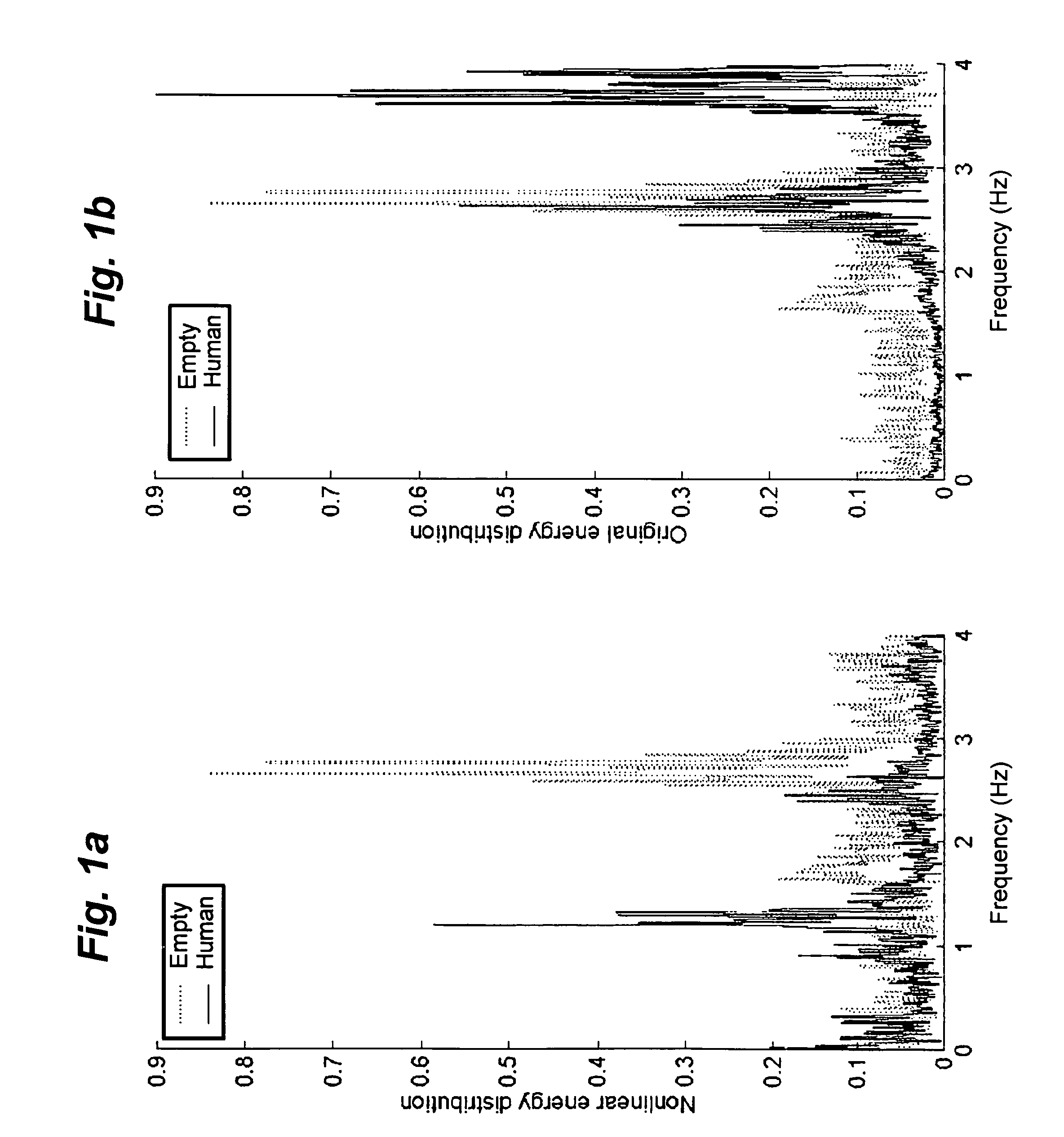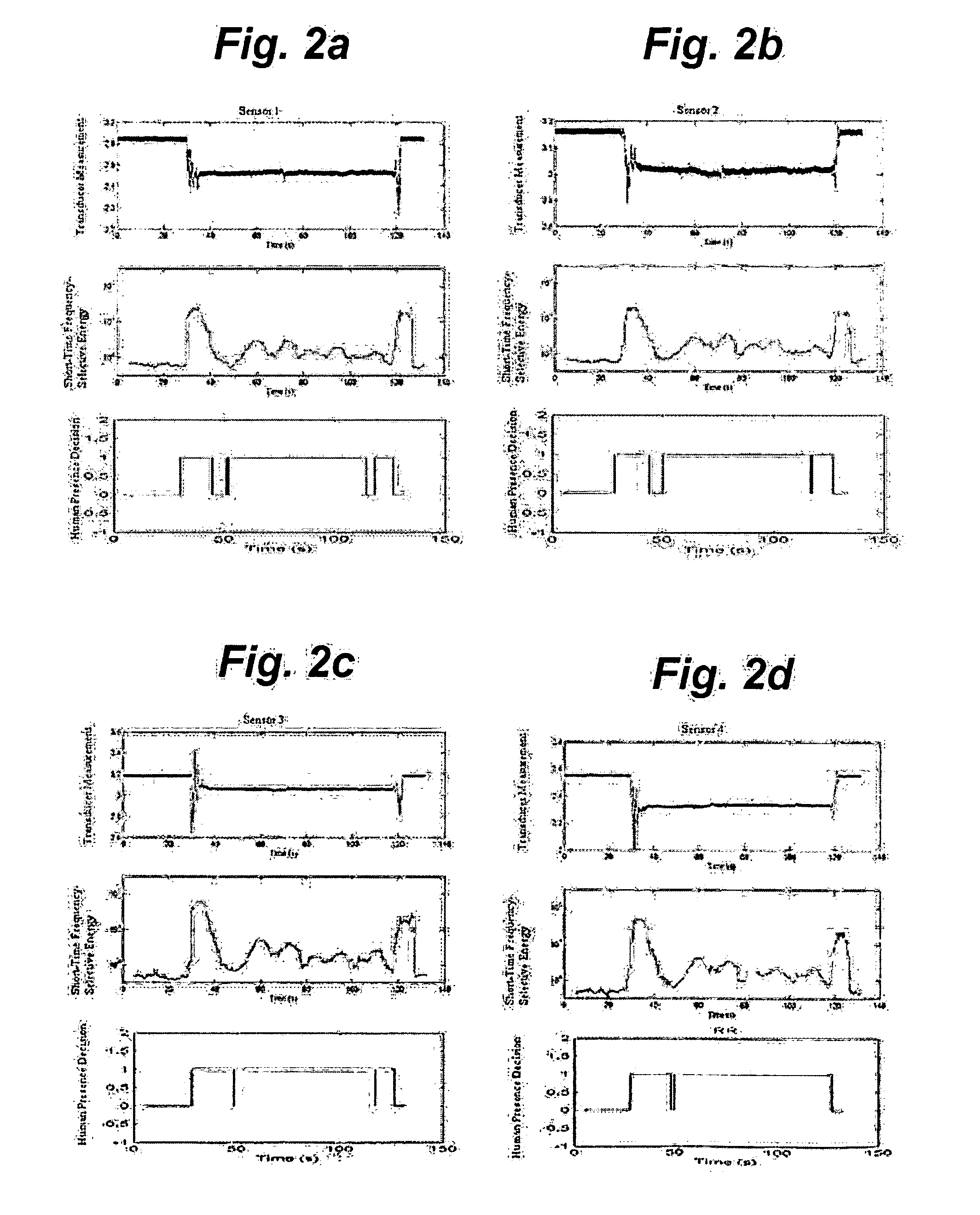Living being presence detection system
a detection system and living being technology, applied in vehicular safety arrangments, process and machine control, frequency-division multiplex, etc., can solve the problems of occupant detection systems based on such sensors being more prone to errors than their weight-based counterparts, and occupant detection systems that use focal plane array technology tend to be much more expensive, so as to facilitate the rescue of living beings and prevent accidents and loss of li
- Summary
- Abstract
- Description
- Claims
- Application Information
AI Technical Summary
Benefits of technology
Problems solved by technology
Method used
Image
Examples
Embodiment Construction
[0059] Each time the heart beats the ballistocardiogram propagates through the human body, through the media between the human body and the measurement transducer, and is eventually recorded by the transducer. The same is true of the human breathing signal. The media between the human body and the measurement transducer vary tremendously across the different applications Such media often includes the seat cover, cushion, and seat frame combination in vehicle seat occupancy detection applications; the vehicle body that encloses the trailer or the trunk space in entry point inspection applications; the rubble surface or the glass pane window in search and rescue applications; or the earth or the outer wall in search and capture applications. Since ballistocardiogram and breathing signals propagate in these media with different attenuations, the selection of the transducers that measure these signals is application dependent. For example, the vehicle seat occupancy...
PUM
 Login to View More
Login to View More Abstract
Description
Claims
Application Information
 Login to View More
Login to View More - R&D
- Intellectual Property
- Life Sciences
- Materials
- Tech Scout
- Unparalleled Data Quality
- Higher Quality Content
- 60% Fewer Hallucinations
Browse by: Latest US Patents, China's latest patents, Technical Efficacy Thesaurus, Application Domain, Technology Topic, Popular Technical Reports.
© 2025 PatSnap. All rights reserved.Legal|Privacy policy|Modern Slavery Act Transparency Statement|Sitemap|About US| Contact US: help@patsnap.com



